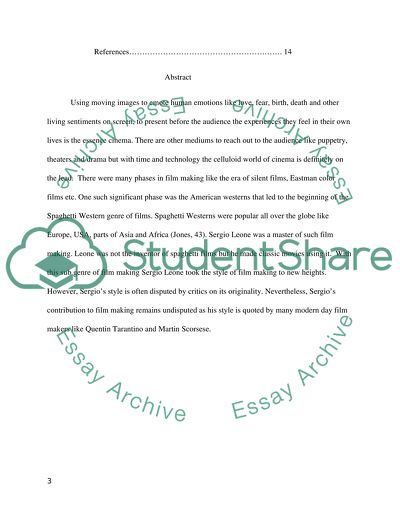Cite this document
(“How Sergio Leone Influenced Filmmaking Essay Example | Topics and Well Written Essays - 2000 words”, n.d.)
How Sergio Leone Influenced Filmmaking Essay Example | Topics and Well Written Essays - 2000 words. Retrieved from https://studentshare.org/visual-arts-film-studies/1453258-how-sergio-leone-influenced-filmmaking
How Sergio Leone Influenced Filmmaking Essay Example | Topics and Well Written Essays - 2000 words. Retrieved from https://studentshare.org/visual-arts-film-studies/1453258-how-sergio-leone-influenced-filmmaking
(How Sergio Leone Influenced Filmmaking Essay Example | Topics and Well Written Essays - 2000 Words)
How Sergio Leone Influenced Filmmaking Essay Example | Topics and Well Written Essays - 2000 Words. https://studentshare.org/visual-arts-film-studies/1453258-how-sergio-leone-influenced-filmmaking.
How Sergio Leone Influenced Filmmaking Essay Example | Topics and Well Written Essays - 2000 Words. https://studentshare.org/visual-arts-film-studies/1453258-how-sergio-leone-influenced-filmmaking.
“How Sergio Leone Influenced Filmmaking Essay Example | Topics and Well Written Essays - 2000 Words”, n.d. https://studentshare.org/visual-arts-film-studies/1453258-how-sergio-leone-influenced-filmmaking.


